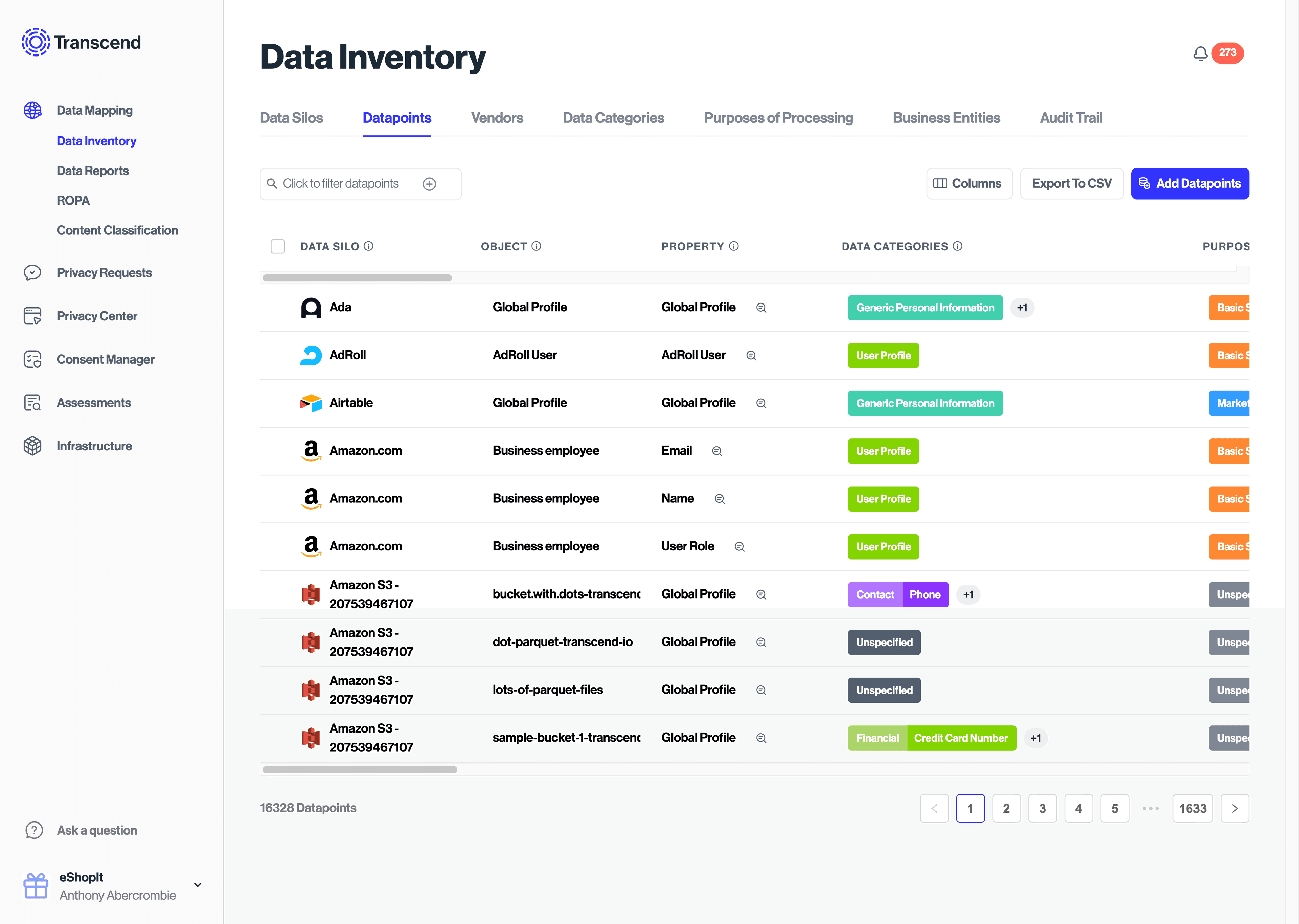Structured Discovery Configuration for Databases
You can use the Database integration to programmatically identify personal information in your Database and pull it into Transcend as datapoints through our Structured Discovery plugins. Transcend's Structured Discovery tool automatically classifies the data discovered in your database. By leveraging machine learning techniques, we can categorize and recommend the data category for each piece of data discovered. With Structured Discovery, Transcend helps you keep your Data Inventory up to date through inevitable database schema changes. Check out our full Structured Discovery guide for more information about how it works.
The datapoint are assigned a data category and processing purpose to help you classify internal data. Additionally, you can assign custom tags to your datapoints to allow for further classification, tracking and reporting. In this way, Transcend helps you discover, classify and label data in a Database automatically to ensure your Data Inventory is current.

The Datapoint Schema Discovery plugin in the Database integration allows you to programmatically scan your database to identify the pieces of data in your DB and pull them into Transcend as datapoints and sub-datapoints. Once the datapoints are in Transcend, they can be classified, labeled, and configured for DSRs.
The plugin works by scanning the database information schemas to detect all tables and columns.
To enable the datapoint schema discovery plugin, navigate to the Structured Discovery tab within the Database integration and toggle the plugin on. From there, you'll be able to set the frequency for which the plugin will run to discover new datapoints and sub-datapoints as they are added to the database. Note: We recommend scheduling the plugin to run at times when the load on the database is lightest.